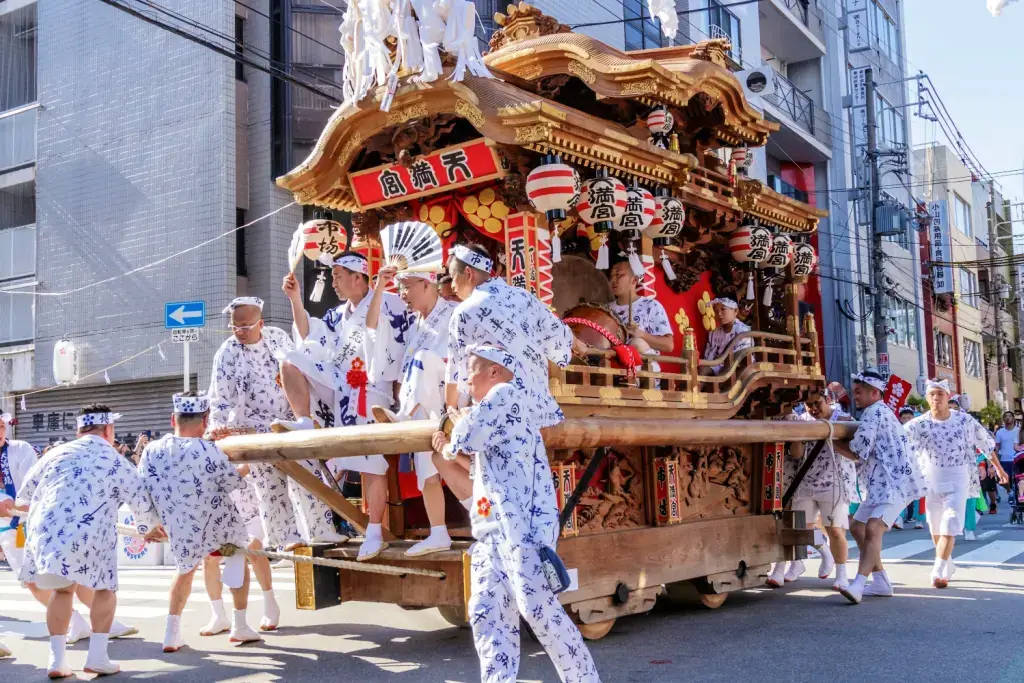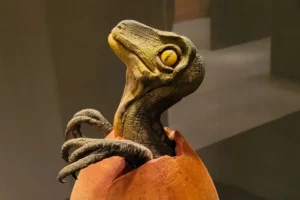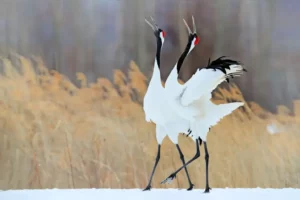There are hundreds of thousands of matsuri festivals across Japan. And these celebrations take place for a wide variety of reasons. Some are related to farming and celebrate the harvest or planting season, such as the Honen festival in Komaki, Aichi. The deity Tenjin is honored during the matsuri of the same name in Osaka. The Sapporo Snow Festival in Hokkaido simply celebrates winter.
We’ll focus on those events that take place in July. Many large cities, local communities, shrines, and temples hold their matsuri at this time of the year to officially start the summer. They’re great opportunities to pull traditional Japanese clothing out of winter storage and enjoy a festive atmosphere.
Table of Contents
ToggleTenjin Matsuri (July 24-25)
Organizers hold this annual festival in association with Tenmangu Shinto Shrine, near Osakatemmangu Station in Osaka. Builders constructed the shrine in 949 CE to honor Sugawara no Michizane, the Japanese god of studies. Sugawara no Michizane was a famous 10th-century academic, and people believe he became a god (tenjin) after his death. This very special matsuri has been taking place in Tokyo since 951. Like the Gion Matsuri in Kyoto, it is one of Japan’s top three festivals.
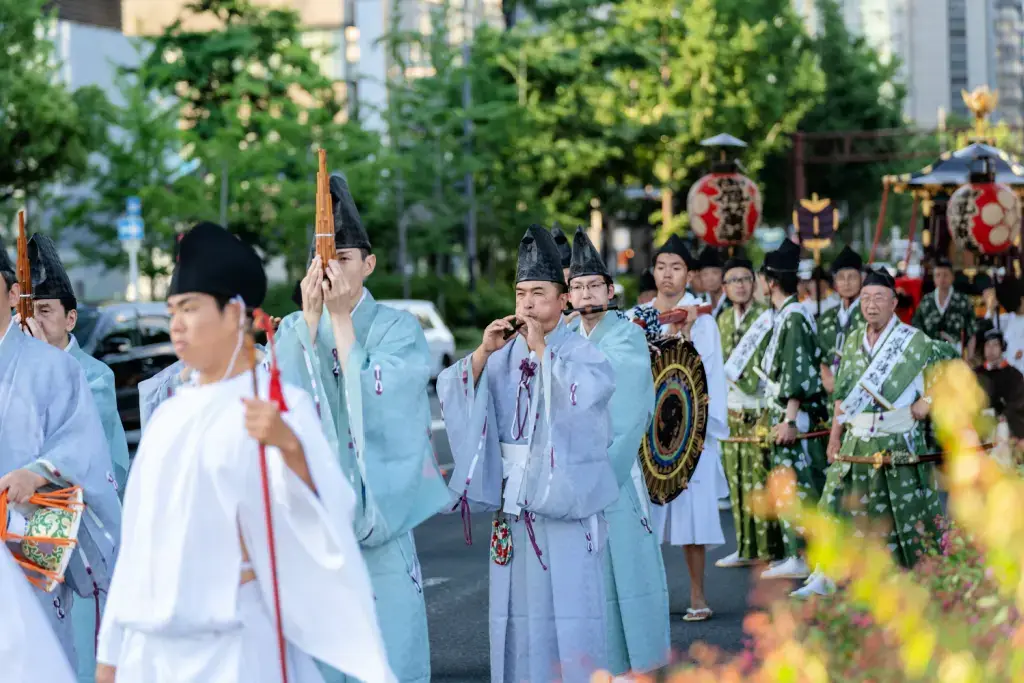
On the first day of the matsuri, priests and participants hold rituals at the shrine and near the Okawa River. Then, drummers signal the beginning of the festivities. On the second day, devotees carry the tenjin out of the shrine and throughout the city on a golden shrine (mikoshi). The elaborate procession includes drumming, music, lion dancing, and umbrella dancing. This continues until the shrine arrives at Okawa River around 6 pm.
But the sights and sounds do not end there. Participants load the mikoshi onto boats, which other boats carrying Bunraku and Noh performers join. The matsuri transforms into a floating festival, entertaining audiences on the river banks until about 7:30 pm. Finally, at 9 pm, organizers launch a lengthy fireworks display over Osaka Castle before devotees return the tenjin to the shrine. You should definitely not miss the unique and spectacular Tenjin Matsuri if you’re in the Osaka area.
Aizen Festival (June 30-July 2)
This Aizen Festival and Matsuri also take place in the Osaka area. It is considered the official start of summer in the region and maybe the oldest summer festival in Japan. However, it is so deeply embedded in Japanese history that this cannot be known.
It was supposedly started in the Asuka period (538-710 CE) by Prince Shotoku, whose remains are buried somewhere in the prefecture. He is most remembered for spreading Buddhism in Japan. He created the festival when food poisoning struck the area; people believed the rampant sickness would disappear if they asked Buddha for good health.
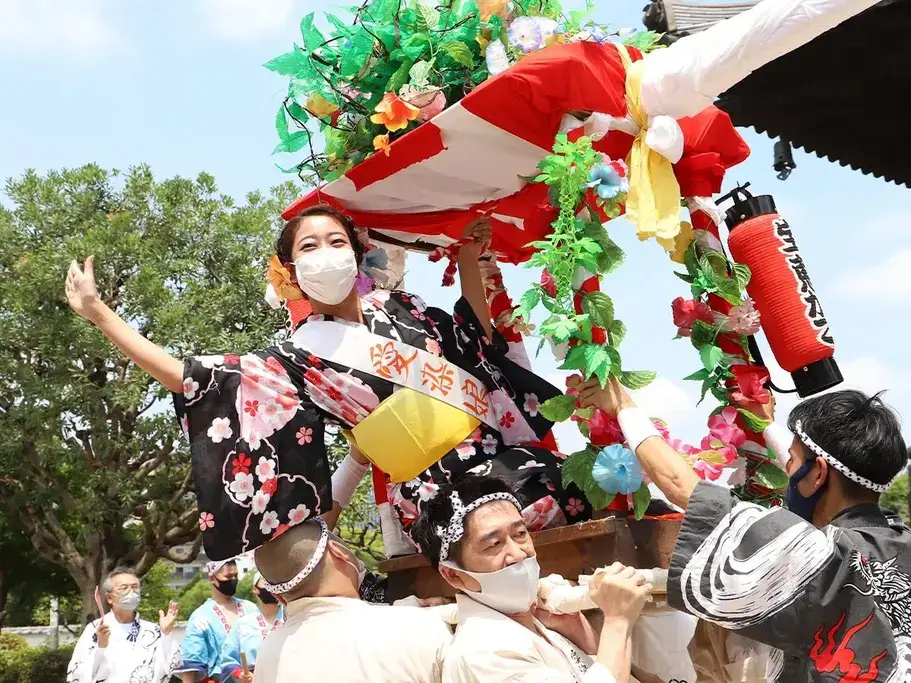
Hundreds of women from all across Japan come to the city to participate in the festival’s “Miss Aizen Contest.” This year, it will be held on July 1st from 7:00 pm. The contestants wear yukatas while giving their well-rehearsed performances to the audience. Afterward, the spectators then vote to decide the winner.
The main event is the Hoekago Parade. Organizers carry the contest participants on portable shrines from Tennoji Park (near Tennoji Station) to Aizen-do (near Shitennoji-mae Yuhigaoka Station). Over 100,000 onlookers line the one-kilometer route, and they are encouraged to dress for the occasion. Almost everyone wears their yukata, kimono, or jinbei, so it’s a great excuse to wear Japanese-style clothing.
Are you looking for great snacks while enjoying festivals in July? Check out Sakuraco! Sakuraco delivers traditional Japanese snacks, sweets, tableware, and more from local Japanese makers right to your door, perfect for a pleasant snack time at home!
Shonan Hiratsuka Tanabata Festival (July 5-7)
In the Shonan area, this festival signals the beginning of summer every July. Tanabata (“Star Festival”) is celebrated all over Japan. Legend says that the gods Orihime and Hikoboshi are lovers but cannot meet because the Milky Way keeps them apart. In the night sky, the star Vega is Orihime, and the star Altair is Hikoboshi. But, in early July, the constellations move to meet.
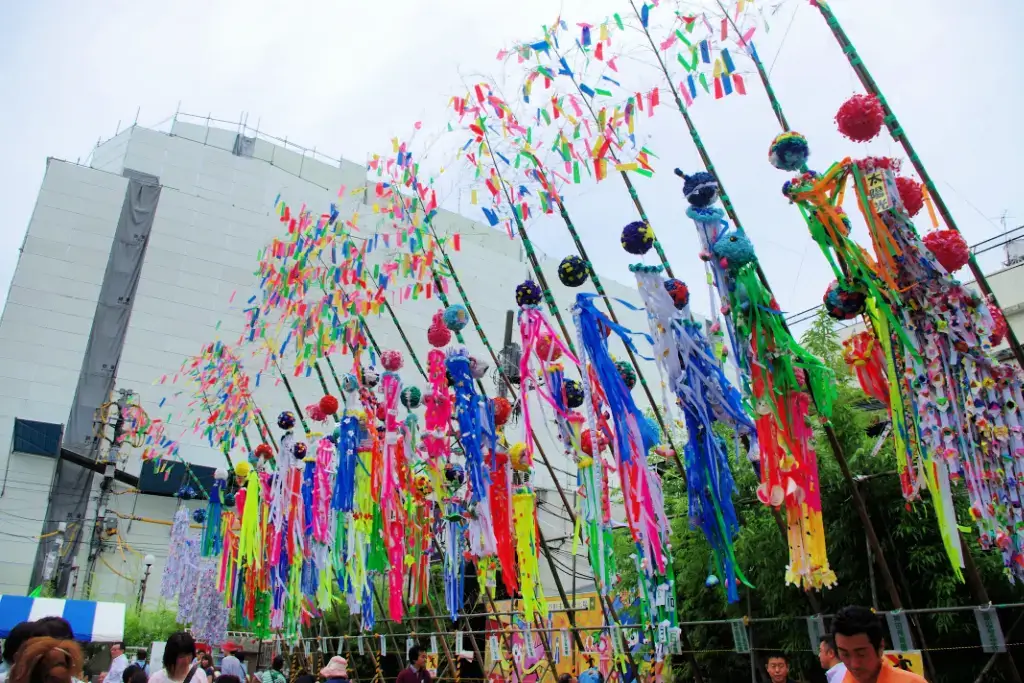
Tanabata is a major festival in Japan. Starting at 10 am, the entire city of Hiratsuka will come alive with the usual festivities. Food carts will line each side of the shopping street across from the north exit of Hiratsuka station. Hundreds of star-themed decorations will be lit at night to add to the celebratory atmosphere. Everything officially closes at 8 pm, but there are sure to be many people still enjoying the evening air afterward.
Narita Gion Festival (July 5-7)
The Narita Gion Festival also has a long history in Japan. The event started over 300 years ago to ask Buddha to bless the coming crops. Today, it draws almost half a million people a year. The festival takes place at Naritasan Shinshoji Temple in Chiba. Temples are everywhere in the area, but this Shingon Buddhist temple has existed since the 10th century. There are other noteworthy attractions in the area as well. The Fudo Myo-o statue is associated with the founder of this particular Buddhist school. A short walk away, you can also find a magnificent three-story pagoda.
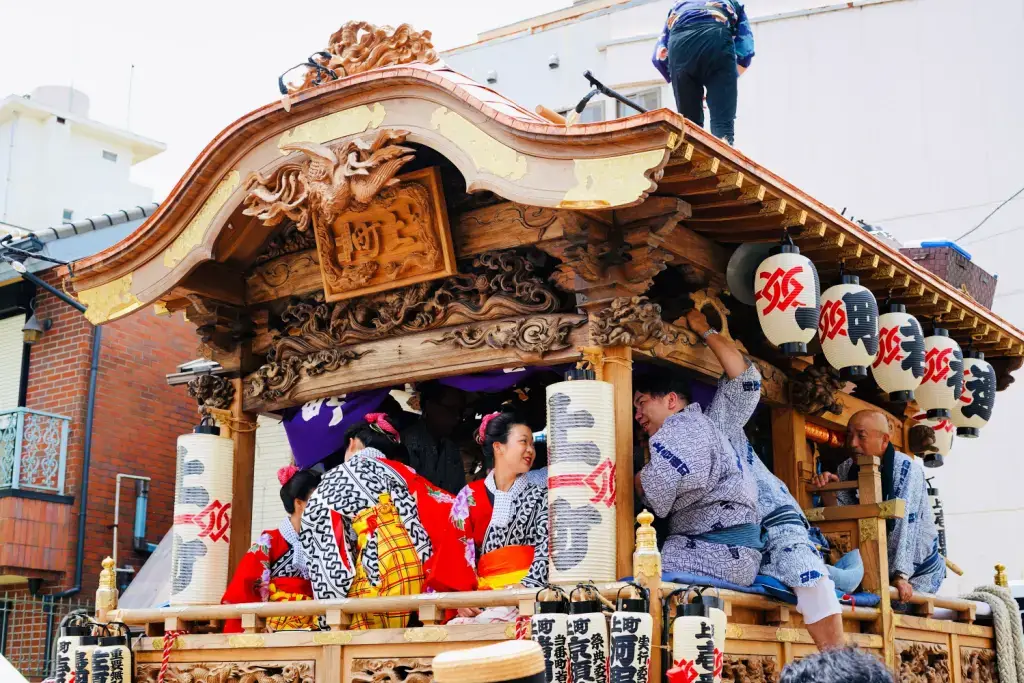
On the first day, festivities start at noon with a religious ceremony led by the temple priests. Then, a procession of musicians, costumed dancers, and floats enters the city. Celebrations continue into the night among beautiful Japanese lanterns. But this festival comes with a warning: The streets in the area are barely wide enough for the floats to navigate. So, the organizers suggest watching the procession from a safe distance to avoid getting hurt.
Shinjuku Eisa Festival 2024 (July 27)
If you want to experience Okinawan culture without a lengthy trip, head to Shinjuku on July 27th. This event, officially the “Okinawa Zento Eisa Matsuri, ” will also mark its 21st anniversary this year. This festival celebrates Okinawan culture. Generally, the main attraction is the groups of costumed eisa dancers performing their routines to traditional drumming. This style of dancing came from the Okinawa region as a bon folk dance (bon odori). The dance usually takes place during the Obon period in August. Obon is a significant time when families honor their ancestors in the Japanese calendar.
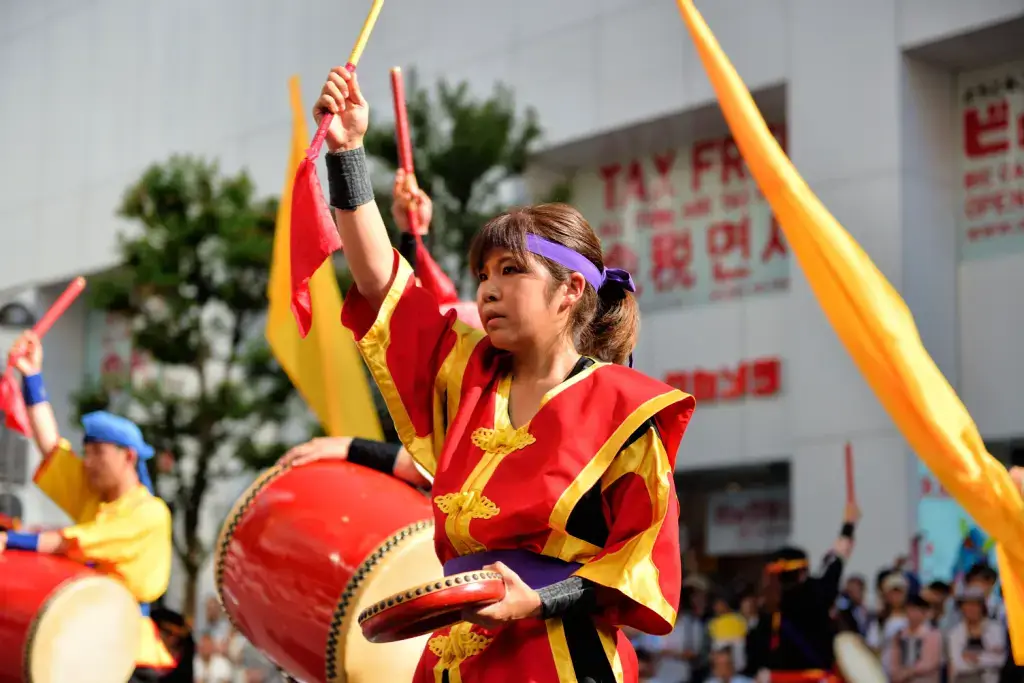
The celebrations will occur in the streets around Shinjuku station’s east and west exits. Although a relatively new festival, it has recently attracted over a million onlookers. So be prepared for the busiest train station in Tokyo to be busier than you’ve ever seen it.
Why should I go to events like the Tenjin Matsuri?
July in Japan is full of exciting festivals with unique traditions and celebrations. Attending these events offers a chance to experience Japanese culture up close. The parades, fireworks, music, and traditional dancing bring people together in a fun and festive atmosphere.
They’re also the perfect opportunities to wear traditional Japanese clothing and immerse oneself in local customs. By joining in, you’ll also gain a deeper understanding of Japan’s culture, making some great summer memories. If you’re in the country, don’t miss the chance to be part of these vibrant celebrations. Have you visited any of these festivals? Perhaps you have some tips for our readers! Are there any other festivals that stand out to you? Start a conversation below!


